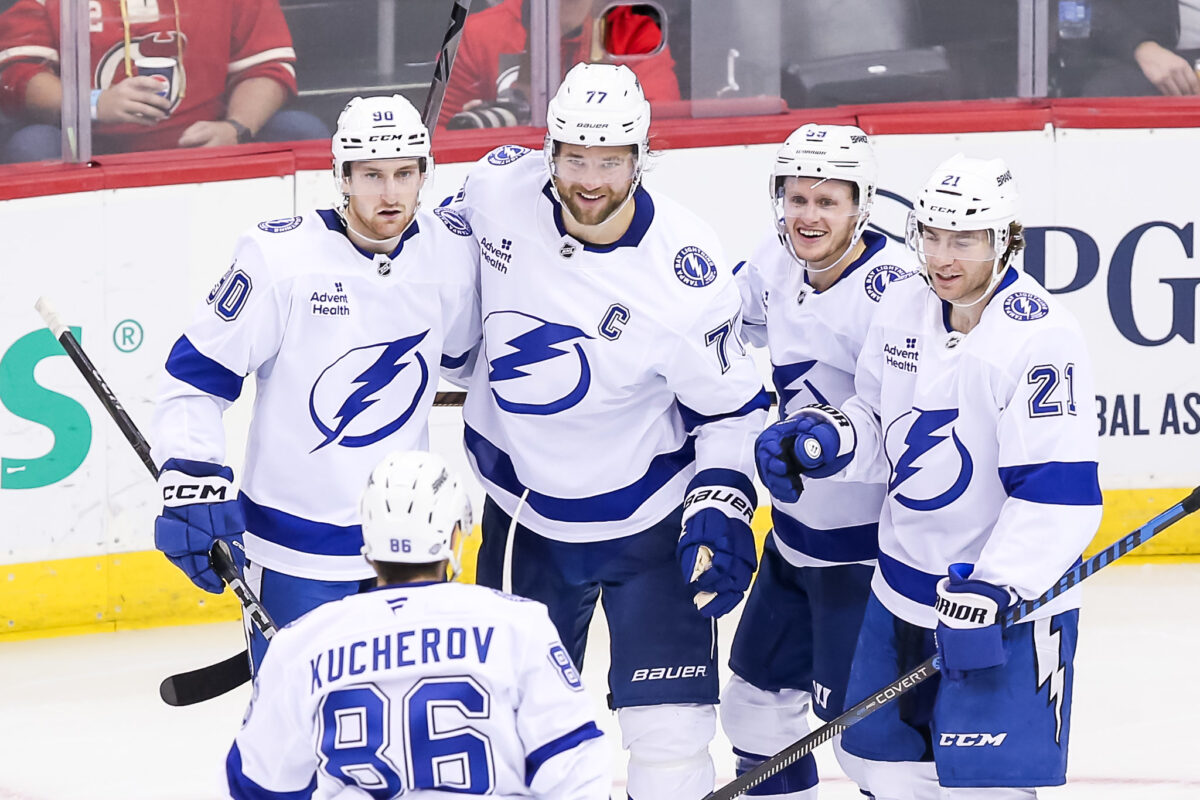The Tampa Bay Lightning rebounded following a frustrating loss with a shutout victory over a solid Washington Capitals squad at Amalie Arena (Oct. 25). The highlight of the night was rookie Conor Geekie scoring his first NHL goal on a one-timer near the top of the circle. Geekie was one of the vital pieces in the return for Mikhail Sergachev, who Tampa Bay shipped out over the summer.
Related: Tampa Bay Lightning Place Conor Sheary on Waivers
The other part of the return, J.J. Moser, is off to a hot start with the Lightning and looks like a critical piece moving forward. He’s been one of head coach Jon Cooper’s most reliable defensemen on a new-look blue line in Tampa Bay. What has made Moser so effective in his impressive start to the season for the Lightning?
Moser Making a Powerful First Impression Not Just for Himself in Tampa Bay
One of the main changes to the Tampa Bay play style this season is their improved five-on-five play, and Moser has been a catalyst for the Lightning’s improvement in that area. While he was previously known for his pure shutdown and defensive approach to the game, he’s now starting to develop into a two-way threat from the back end with upgraded offensive talent in Tampa Bay. His production has been off the charts, with two goals and six points in his first eight games with his new club.

Furthermore, he controls the pace of play and possession at five-on-five and plays hefty first-pairing minutes with captain Victor Hedman. I mentioned over the summer that Moser is the perfect partner for an aging, more offensive Hedman. This pairing allows Hedman to jump up on the rush and pinch down low in the cycle game while Moser covers back to defend the rush the other way. Moser’s presence continues to factor into Hedman’s improved possession numbers at five-on-five this season. For reference, Hedman controlled 49.32% of the on-ice expected goal share (xGF%) at five-on-five last season, below the 50% threshold of out-chancing opponents in quality of unblocked shot attempts (via Natural Stat Trick). However, Hedman has controlled 56.49% of the on-ice expected goal share (xGF%) at five-on-five this season, an increase with most of his minutes with Moser by his side.
Moser’s Early Season Microstats Report Card
For some quick background, I plan to hand-track microstats for the Lightning throughout the 2024-25 season. This dataset will include data points such as passes, zone entries, and additional stats the NHL doesn’t cover. I will continue to share my findings throughout the season, so stay tuned for updates.
I’ve covered two full games at five-on-five for the Lightning this season (Oct. 11 and Oct. 15), and Moser has stood out with his rush defense on carry-ins. So far, he has faced seven carry-ins against at five-on-five in the two tracked games and has successfully defended four of them. To define a successfully defended entry, a defender pokes the puck off a carrier’s stick, blocks a shot attempt, or forces the carrier to turn the puck over. His 57.14 defended entry percentage will continue to help the Lightning’s new defense core develop.
As for what Moser can improve, he needs to work on his zone exits. Playing more minutes than most defenders on the roster at five-on-five, he’s faced the most dump-ins against on zone entries. He’s successfully retrieved the puck five out of six times on his puck touches, but that’s not where the root of the issue lies. The problem is what he does following the retrieval, as he’s tied for first on the Lightning defense core in failed exits with three. However, the sample size is still small, but it’s something to keep an eye on as the season progresses.
Moving Forward for Moser
Despite being drafted as an over-ager, Moser has looked impactful at the NHL level since the first day he stepped into the league. He’s reaping the benefits of an improved team and structure around him, as his offensive production is proof in the pudding. Over the offseason, the Lightning gave Moser a two-year bridge deal worth $3.375 million. By the time that contract ends, expect Moser to be worth way north of that salary, as the 24-year-old has plenty of room for growth. The Lightning are back in action Monday night (Oct. 28) against their old captain, Steven Stamkos, and the Nashville Predators.
